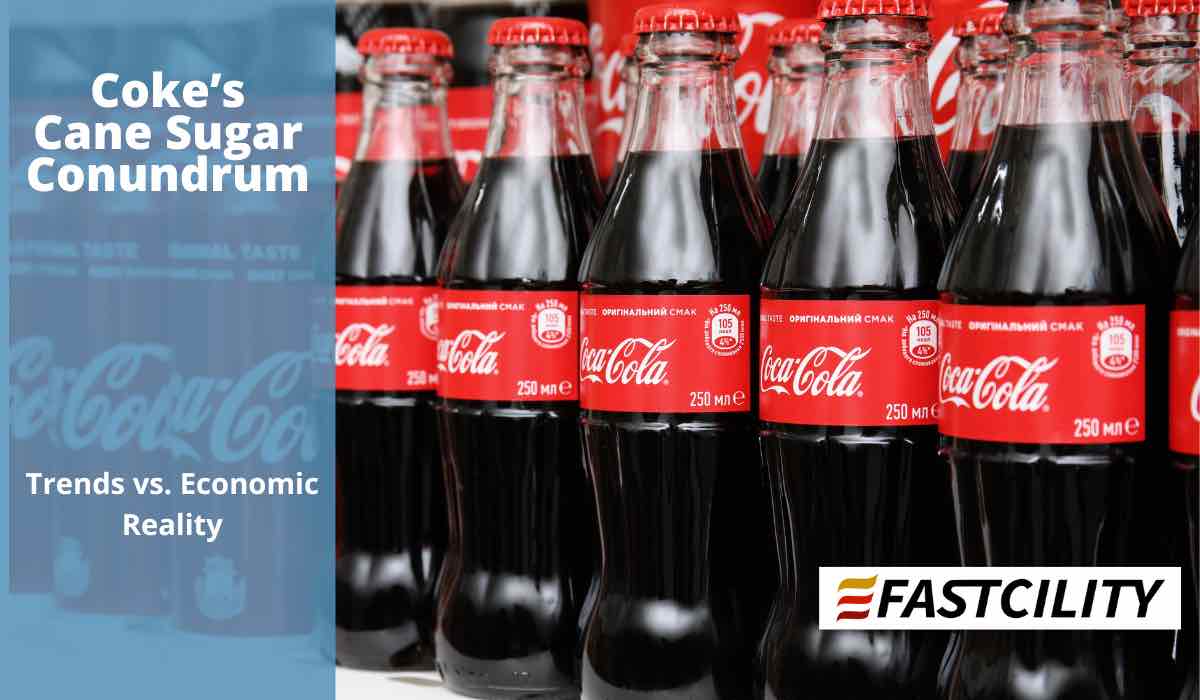A potential shift from high-fructose corn syrup to cane sugar could satisfy wellness-focused consumers—but at a billion-dollar price tag.
Few products are as iconic—or as scrutinized—as Coca-Cola. For decades, its familiar formula has been the subject of debates around sugar, sweeteners, and health. Now, new reports suggest that Coca-Cola is exploring a shift from high-fructose corn syrup (HFCS) to cane sugar in the U.S. market. It’s a move that reflects shifting consumer preferences—but also exposes the tension between health trends and economic reality.
The Push Toward “Clean” Sweeteners
Consumer attitudes toward sugar have changed dramatically. Younger demographics, in particular, are skeptical of HFCS, often viewing it as “unnatural” or overly processed. Cane sugar, by contrast, enjoys a halo of being simpler, more authentic, and even more sustainable in perception.
This perception matters. In an era when “clean labels” and ingredient transparency drive purchasing behavior, switching from HFCS to cane sugar could align Coca-Cola more closely with wellness-oriented consumers. It’s a strategy designed to win back health-conscious drinkers who may have drifted toward increasingly popular functional sodas, kombucha, or flavored waters.
The Billion-Dollar Question
But the economics are daunting. Analysts estimate that a full shift to cane sugar could cost Coca-Cola over a billion dollars annually. Cane sugar is significantly more expensive than HFCS in the U.S., thanks in part to trade restrictions, tariffs, and farm subsidies. That cost doesn’t just hit Coca-Cola’s bottom line—it could ripple across the entire supply chain.
Corn farmers, who have long benefited from the demand for HFCS, would take a hit. Beverage prices could rise. And Coca-Cola’s bottling partners would need to absorb or pass along added costs in a competitive market already wrestling with inflation and shifting demand patterns.
Health Trends vs. Hard Numbers
This tension highlights a broader challenge in the beverage industry: how to respond to consumer health concerns without destabilizing established supply chains and pricing models. For Coca-Cola, reformulating its flagship product comes with unique risks.
On one hand, sticking with HFCS leaves the brand vulnerable to criticism and potentially limits its relevance with younger, health-conscious consumers. On the other hand, a pivot to cane sugar could force price hikes or margin squeezes at a time when cost pressures are already high.
The company also faces the challenge of consistency. Consumers expect Coca-Cola to taste exactly the same worldwide. Reformulating in the U.S. but not in other markets could create perception gaps—or worse, the idea that one region gets a “better” version of the product.
Lessons from Abroad
Interestingly, Coca-Cola already sells cane sugar–sweetened variants in several international markets. Many consumers swear by the taste of “Mexican Coke,” which is bottled with cane sugar and has developed a cult following in the U.S. among enthusiasts. This suggests that Coca-Cola has experience with cane sugar supply chains and consumer messaging—but scaling that to the full American market is another story entirely.
Competitors will also be watching closely. If Coca-Cola commits to cane sugar, it could trigger a broader industry trend, pressuring PepsiCo and other major players to follow suit—or risk being seen as less health-forward.
What It Means for Operators
For operators, distributors, and retailers, the outcome of this debate will shape pricing and positioning. A cane sugar pivot could drive short-term cost increases, but it may also reinvigorate consumer interest in classic sodas. It could also open doors for upselling premium variants—capitalizing on the perception of “real sugar” as worth paying for.
In the bigger picture, Coca-Cola’s deliberations underscore the tightrope beverage companies must walk: innovating to meet health trends while maintaining economic viability. Staying relevant to a young demographic means paying attention to climate impact, sourcing, and health
Whether the cane sugar shift happens broadly or only in select product lines, one thing is clear—consumer demand for cleaner, more natural ingredients isn’t slowing down.


Recent Comments